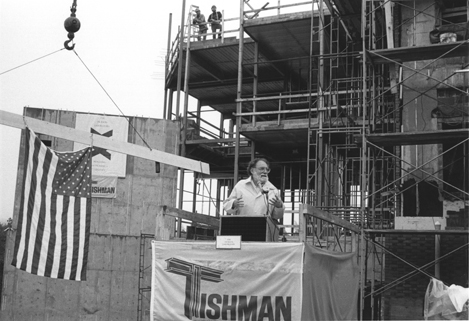
Faculty Research 1990 - 1999
Granulocyte/macrophage colony-stimulating factor and interleukin-3 correct osteopetrosis in mice with osteopetrosis mutation.
Document Type
Article
Publication Date
1999
Keywords
Animal, Bone-Marrow: de, pa, Cell-Count: de, Comparative-Study, Drug-Combinations, Enzyme-Linked-Immunosorbent-Assay, Female, Granulocyte-Macrophage-Colony-Stimulating-Factor: bl, Hindlimb: de, ra, pa, Interleukin-3: bl, tu, Male, Mice, Mice-Inbred-C3H, Mice-Inbred-C57BL, Mice-Mutant-Strains, Mutation, Osteoclasts: de, Osteopetrosis: dt, bl, ge, Recombinant-Proteins: tu, Reverse-Transcriptase-Polymerase-Chain-Reaction, RNA: an, SUPPORT-NON-U-S-GOVT, SUPPORT-U-S-GOVT-P-H-S
First Page
553
Last Page
566
JAX Source
Am J Pathol 1999 Feb;154(2):553-66
Grant
CA20408/CA/NCI
Abstract
Although young mice homozygous for the osteopetrosis (op) mutation usually developed prominent osteopetrosis, its severity was markedly reduced in aged op/op mice. This age-associated reversal of osteopetrosis was accompanied by the expansion of bone marrow cavities and increased numbers of tartrate-resistant acid phosphatase (TRAP)-positive cells and of macrophages in the bone marrow. The TRAP-positive cells were mononuclear and developed ruffled borders and numerous vesicles, vacuoles, and granules. Enzyme-linked immunosorbent assay demonstrated a significant elevation of serum granulocyte/ macrophage colony-stimulating factor (GM-CSF) and interleukin (IL)-3 levels in the aged op/op mice. To examine whether GM-CSF and/or IL-3 could correct osteopetrosis in young op/op mice, 5 ng of recombinant murine (rm)GM-CSF and/or 100 ng of rmIL-3 were injected daily into young op/op mice. In these treated young op/op mice, the bone marrow cavities were expanded significantly at 2 weeks after administration, associated with significantly increased numbers of TRAP-positive cells and bone marrow macrophages. TRAP-positive cells increased in number with days after injection. These results suggest that GM-CSF and IL-3 induce the development of osteoclasts to correct osteopetrosis in the op/op mice with aging.
Recommended Citation
Myint YY,
Miyakawa K,
Naito M,
Shultz LD,
Oike Y,
Yamamura K,
Takahashi K.
Granulocyte/macrophage colony-stimulating factor and interleukin-3 correct osteopetrosis in mice with osteopetrosis mutation. Am J Pathol 1999 Feb;154(2):553-66

